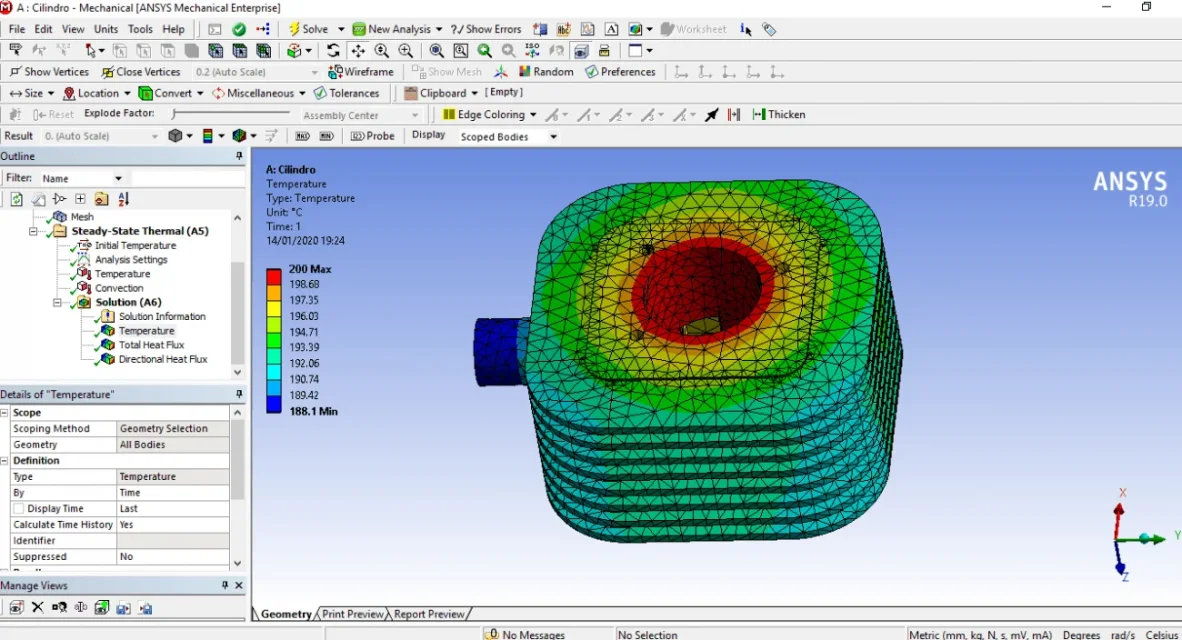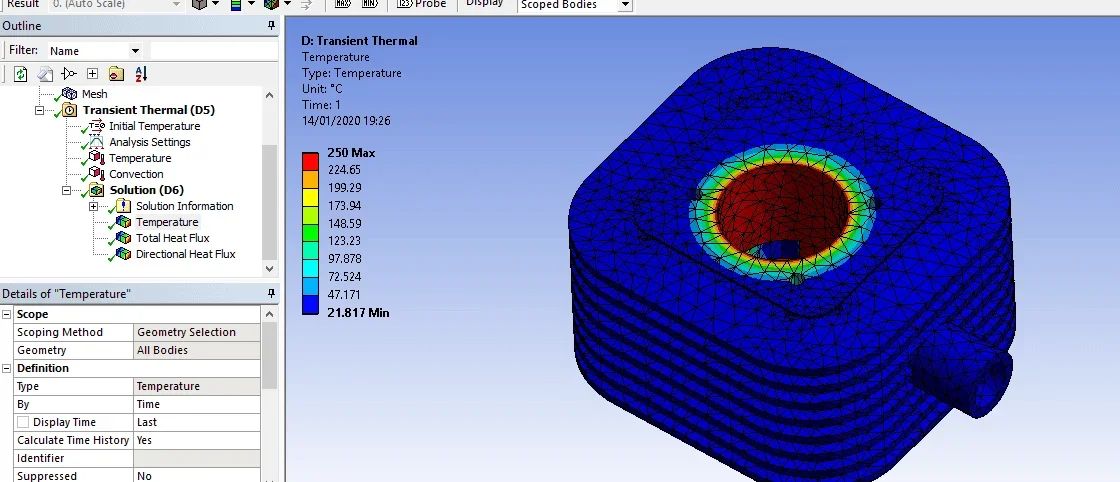IlConte94
Guest
Good evening,
as from title I wanted to ask to simulate air cooling of a cylinder 50 cc air cooled, which ansys workbench environment should be used; I'll explain better.
-I saw this tutorial on youtube
where simulation is carried out in "steady state thermal" using the same solver "mechanical" of a structural fem: I replicated the tutorial using my cad .step model and although it achieves convergence the results are obviously not right (by hindering that I would better apply the condition to the inner temperature boundary in a more restricted area to simulate the candle instead of the entire cylinder shirt): setting an internal temperature of 200° I get outside on the 188° fins! cooling does not work... (Note: I set the convection parameters as shown on youtube; among other things also on youtube there are results incompatible with reality: from 200 to 184°!)
 -I tried therefore to carry out the same simulation in "transient thermal", although the phenomenon is almost certainly almost-stationary and not transient: I get better results but exaggerated in the opposite direction: from 250° inside (changed slightly for test) you pass to 20° on the fins... Here too the solver is the mechanical.. .
-I tried therefore to carry out the same simulation in "transient thermal", although the phenomenon is almost certainly almost-stationary and not transient: I get better results but exaggerated in the opposite direction: from 250° inside (changed slightly for test) you pass to 20° on the fins... Here too the solver is the mechanical.. .
 -I thought maybe you should use the "fluid flow" that I tried to open and is totally different from the other environment. . .
-I thought maybe you should use the "fluid flow" that I tried to open and is totally different from the other environment. . .
What do you think? In theory it should be a thermal simulation so cfd (fluent) but I do not understand then what it is to serve steady state and transient thermal.. .
thanks in advance
as from title I wanted to ask to simulate air cooling of a cylinder 50 cc air cooled, which ansys workbench environment should be used; I'll explain better.
-I saw this tutorial on youtube
 -I tried therefore to carry out the same simulation in "transient thermal", although the phenomenon is almost certainly almost-stationary and not transient: I get better results but exaggerated in the opposite direction: from 250° inside (changed slightly for test) you pass to 20° on the fins... Here too the solver is the mechanical.. .
-I tried therefore to carry out the same simulation in "transient thermal", although the phenomenon is almost certainly almost-stationary and not transient: I get better results but exaggerated in the opposite direction: from 250° inside (changed slightly for test) you pass to 20° on the fins... Here too the solver is the mechanical.. . -I thought maybe you should use the "fluid flow" that I tried to open and is totally different from the other environment. . .
-I thought maybe you should use the "fluid flow" that I tried to open and is totally different from the other environment. . .What do you think? In theory it should be a thermal simulation so cfd (fluent) but I do not understand then what it is to serve steady state and transient thermal.. .
thanks in advance
